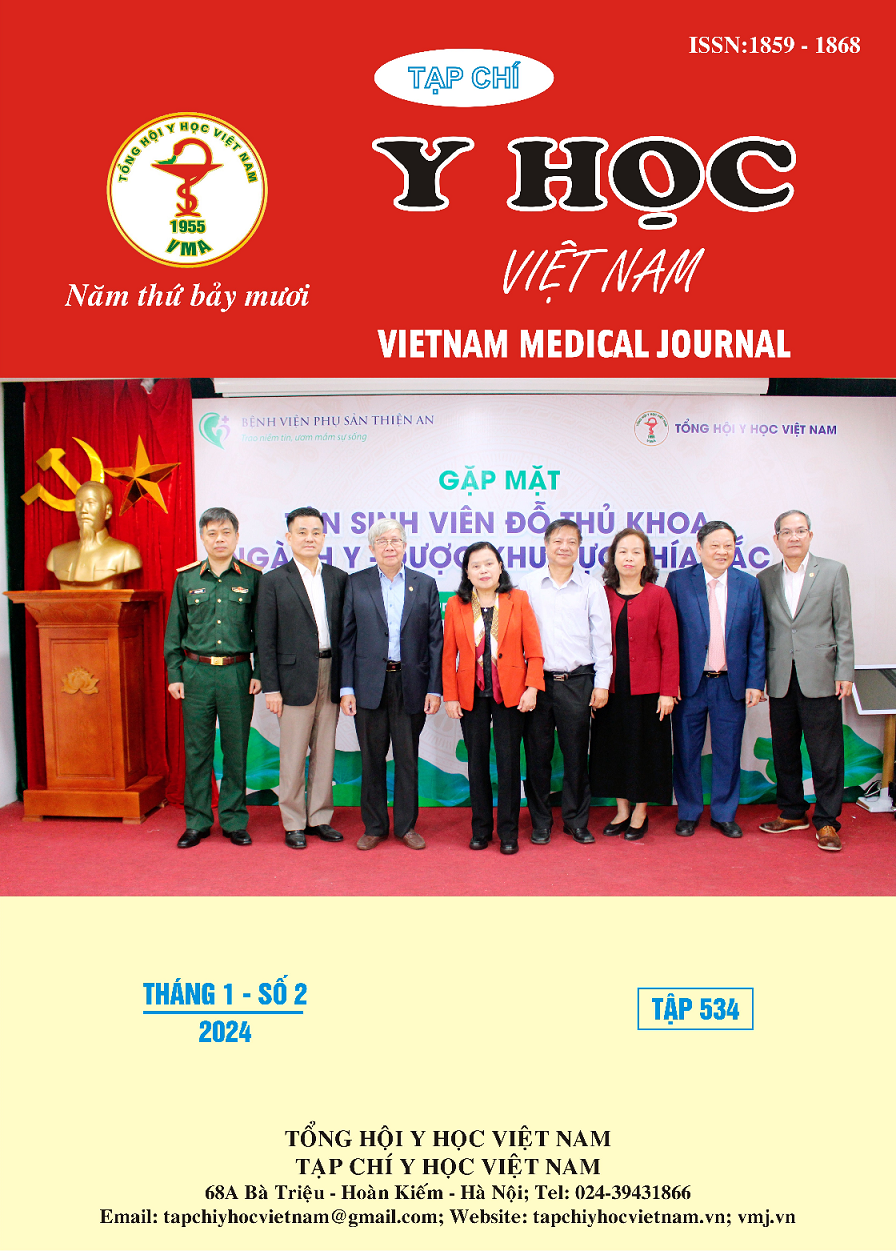CLINICAL, SUBCLINICAL CHARACTERISTICS AND TREATMENT RESULTS OF LUDWIG’S ANGINA CAUSED BY TOOTH INFECTION
Main Article Content
Abstract
Objective: To describe the clinical and subclinical characteristics of patients with tooth-caused Ludwig’s angina at some certain hospitals in Hanoi during the period from 2022 - 2023 and treatment results of patients in the study group. Research subjects and methods: 30 patients were case series described with a confirmed diagnosis of tooth-related oral floor infection treated at Hanoi Medical University Hospital, Viet Duc University Hospital from July 2022 to July 2023. Results: Patients aged 45 years and older accounted for the majority with 86.7%. The main cause was third molar toothache with 16 patients, accounting for 53.3%. There were 19 patients, accounting for 63.3%, with comorbidity diseases. The most common symptom is painful swallowing with rates of 90%. The most compartment involved is the submandibular cavity (83.3%). Most patients have complications spreading to the surrounding area, made up 70%. All patients received surgical drainage of pus, systemic antibiotics and local wound care. Treatment results were good at 36.7% of patients, 56.67% moderate and 6.67% poor, no patient died. Conclusion: Ludwig’s angina is a dangerous complication of oral disease, mainly due to infection of the third molar tooth. Patients usually arrive when symptoms spread to the surrounding area, with 70%. The main treatment is surgical drainage of pus, with good results accounting for 36.7%, which is still low.
Article Details
References
2. Flynn TR, Shanti RM, Hayes C. Severe odontogenic infections, part 2: prospective outcomes study. J Oral Maxillofac Surg. 2006; 64(7): 1104-1113. doi: 10.1016/j.joms. 2006.03. 031
3. Uluibau IC, Jaunay T, Goss AN. Severe odontogenic infections. Aust Dent J. 2005;50(4 Suppl 2): S74-81. doi: 10.1111/j.1834-7819. 2005.tb00390.x
4. Wang J, Ahani A, Pogrel MA. A five-year retrospective study of odontogenic maxillofacial infections in a large urban public hospital. Int J Oral Maxillofac Surg. 2005;34(6):646-649. doi:10. 1016/j.ijom.2005.03.001
5. Ko HH, Chien WC, Lin YH, Chung CH, Cheng SJ. Examining the correlation between diabetes and odontogenic infection: A nationwide, retrospective, matched-cohort study in Taiwan. PLOS ONE. 2017;12(6): e0178941. doi:10.1371/ journal.pone.0178941
6. Fang M, Ishigami J, Echouffo-Tcheugui JB, Lutsey PL, Pankow JS, Selvin E. Diabetes and the risk of hospitalisation for infection: the Atherosclerosis Risk in Communities (ARIC) study. Diabetologia. 2021;64(11): 2458-2465. doi:10. 1007/s00125-021-05522-3
7. An J, Madeo J, Singhal M. Ludwig Angina. In: StatPearls. StatPearls Publishing; 2023. Accessed September 26, 2023. http://www.ncbi. nlm.nih.gov/books/NBK482354/
8. López-González E, Vitales-Noyola M, González-Amaro AM, et al. Aerobic and anaerobic microorganisms and antibiotic sensitivity of odontogenic maxillofacial infections. Odontology. 2019;107(3): 409-417. doi:10.1007/ s10266-019-00414-w


